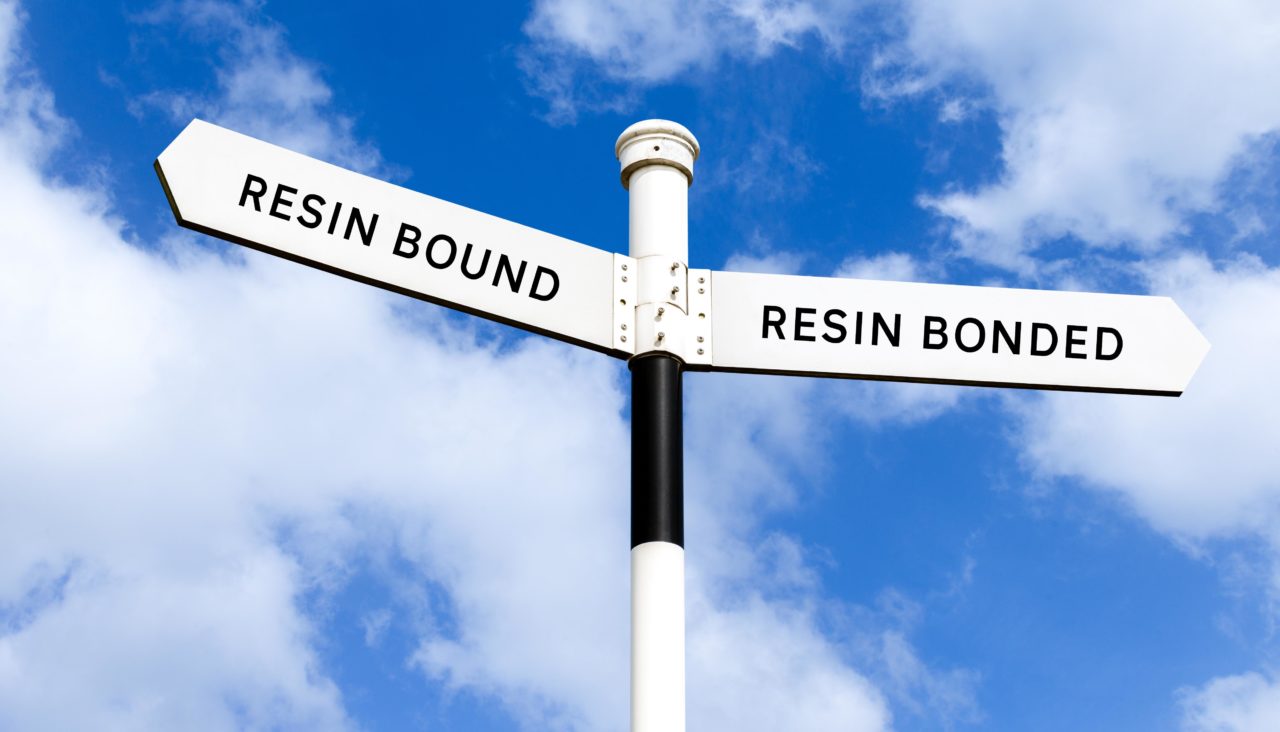
Composed of kiln-dried aggregate bound with clear polyurethane resin, resin bound surfacing is typically laid from a minimum thickness of 15mm to 20mm.
Resin bound surfacing may be laid on a solid base of concrete, asphalt concrete or hot rolled asphalt. Some products, such as RonaDeck EcoPath UV, are available for application at a greater thickness to compacted aggregate bases, but these products should only be used on footways.
Resin bound surfacing is porous; it may be applied to existing non-porous bases when an adequate fall is in place and water is free to drain at the interface of surfacing and base. Resin bound surfacing applied to a correctly designed porous base and sub-base will facilitate design of a SuDS compliant permeable pavement construction, reducing flood risk and permitting rainwater to flow into natural water courses.
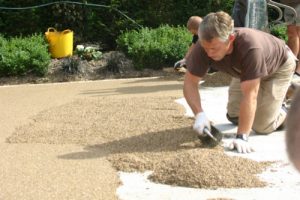 There are two types of polyurethane resin used for resin bound surfacing, one is UV stable (aliphatic polyurethane) which remain unchanged by exposure to ultra-violet light and the other, (aromatic polyurethane) will yellow and darken after exposure to UV light, thus altering the appearance of the aggregate. All Ronacrete products for resin bound surfacing or tree pit applications are UV stable. When retention of the original colour is required, UV stable resins should be chosen. A typical argument put forward by suppliers who do not offer UV stable resins is that many of the aggregates available are yellow and/ or brown. This assertion ignores the large number of sites where some areas are exposed and some are in permanent shade, under evergreen foliage or covered by movable objects, such as plant pots. In such circumstances, shade variation is inevitable and will become apparent relatively quickly.
There are two types of polyurethane resin used for resin bound surfacing, one is UV stable (aliphatic polyurethane) which remain unchanged by exposure to ultra-violet light and the other, (aromatic polyurethane) will yellow and darken after exposure to UV light, thus altering the appearance of the aggregate. All Ronacrete products for resin bound surfacing or tree pit applications are UV stable. When retention of the original colour is required, UV stable resins should be chosen. A typical argument put forward by suppliers who do not offer UV stable resins is that many of the aggregates available are yellow and/ or brown. This assertion ignores the large number of sites where some areas are exposed and some are in permanent shade, under evergreen foliage or covered by movable objects, such as plant pots. In such circumstances, shade variation is inevitable and will become apparent relatively quickly.
There are some MDI based polyurethane binders sold as being UV resistant; evidence from independent researchers suggests that although UV “blockers” may delay the effects of UV light, blockers only delay degradation. We would suggest that designers should ask suppliers claiming UV resistance for independent evidence of long term protection from UV degradation.
Aromatic polyurethane products are excellent for numerous uses and are widely used for flooring, where their resistance to wear, chemical spillages and relatively high service temperatures makes them an obvious choice for many industrial applications. Their lack of resistance to ultraviolet light makes aromatic polyurethanes less suitable for exterior use, except as undercoats protected from UV exposure. UV degradation is not limited to yellowing and darkening, surfaces become duller and other properties such as elasticity and flexibility are also adversely affected by exposure to UV. There is some evidence to support the suggestion that aromatic polyurethane coatings become embrittled and cracked after UV exposure; the following is copied from an academic paper “It can be seen that after 1080 h of exposure, the binder is degraded and free particle clusters were found on the surface. Exposing the films to the UV light results in formation of deep cracks and holes and a non-uniform degradation in the nonstabilized films…..”
Binders for resin bound surfacing should be sufficiently elastic to withstand minor substrate movement and traffic loads; there is evidence of an increased risk of cracking of surfacings bound with resins which have low elasticity, especially when surfacings are applied to asphaltic bases, which are subject to flowing of bitumen binders at higher temperatures. When choosing a resin bound surfacing material, a specifier should weigh the superior properties of aliphatic resins when exposed to UV radiation against the reduced initial cost of aromatic polyurethanes and consider which offers better value for money to their client.
Natural aggregates are most commonly used but coloured glass and colour coated aggregate are also available. The designer should be aware that glass crushes more easily than most natural aggregates and has been known to suffer damage under high heeled shoe traffic. Quartz aggregate with UV stable colour coating can be sourced but coating loss can occur under regular medium to heavy foot traffic. The designer should consider restricting the use of coloured glass and colour coated aggregates to areas with little traffic.
Resin bound surfacing is suitable for foot traffic and light vehicle traffic up to 7.5 tonnes, resin bound surfacing is not recommended for applications where heavy traffic or traffic by heavier vehicles is expected. Typical applications include car parks (excluding shopper’s car parks), driveways, podium decks and terraces, public squares, courtyards, footpaths and pool surrounds.
Composed of a layer of polyurethane resin with kiln-dried aggregate embedded in the freshly applied resin layer, RonaDeck Resin Bonded Surfacing is typically laid at a thickness of approximately 3mm.
Resin bonded surfacing may be laid on a solid base of concrete, asphalt concrete or hot rolled asphalt; steel and timber substrates are also suitable but application to oily timber such as Cedar should be avoided.
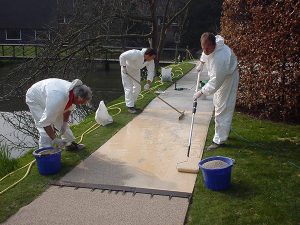 Resin bonded surfacing is not porous; it must be applied to non-porous bases with adequate falls in place to allow free drainage. Resin loss into fissures or low spots in a textured surface may reduce the volume of resin available for bonding of aggregate and it is advisable when applying the resin to a fissured or textured surface to apply a scratch coat, such as RonaDeck Resin Bonded Scratch Coat or RonaDeck Resin Bonded Pore Filler, to regulate the surface before application of the resin layer
Resin bonded surfacing is not porous; it must be applied to non-porous bases with adequate falls in place to allow free drainage. Resin loss into fissures or low spots in a textured surface may reduce the volume of resin available for bonding of aggregate and it is advisable when applying the resin to a fissured or textured surface to apply a scratch coat, such as RonaDeck Resin Bonded Scratch Coat or RonaDeck Resin Bonded Pore Filler, to regulate the surface before application of the resin layer
Resin bonded surfacing, although non-porous, should not be regarded as waterproof. It should be assumed that at least some aggregate will penetrate the full depth of the resin and leave a path for water penetration. When waterproofing is required this may be achieved by application of a waterproof layer followed by an embedment layer, RonaDeck Resin Bonded Surfacing has high tensile strength and sufficient elasticity for most applications. The waterproof layer should typically be thicker than the embedment layer.
Resins used for resin bonded surfacing are typically based on two component polyurethane, methyl methacrylate or bitumen extended epoxy technology; all having their own benefits. It should be noted that the flexibility of bitumen extenders may be reduced in the long term, affecting the performance of the surfacing. Resins for resin bonded surfacing should be sufficiently flexible and elastic to accommodate movement in asphaltic substrates and to avoid undue stress within the substrate, the latter is particularly important when resin bonded surfacing is applied to older asphaltic bases which have lost much of their original tensile strength. All resins require some delay before application to new concrete, asphalt and asphalt concrete substrates. Concrete must be allowed to dry sufficiently to prevent blistering of the resin caused by moisture vapour pressure; surface relative humidity ≤ 75% is an indication that the concrete is sufficiently dry. Similarly, the free volatiles in asphalt or asphalt concrete must be allowed to evaporate to avoid blistering. A waiting time of 3 weeks in warm or mild weather, longer in cold weather, is typically sufficient.
Choice of aggregate can be critical, particularly when the surfacing is to be subjected to vehicle traffic. Bauxite aggregate 1-3mm should be used on highways and is generally the preferred aggregate for vehicle traffic. Granite, basalt and some flint and quartz aggregates may be suitable for lighter vehicle traffic; it should be noted that aggregates ˂ 7 on the Mohs scale of mineral hardness should not be used when surfacing is subject to vehicle traffic. Rounded aggregates, such as pea shingle, which are more prone to pick-out, are not suitable for vehicle traffic. Typical applications include highways, car parks, driveways, podium decks and terraces, public squares, courtyards and footpaths.
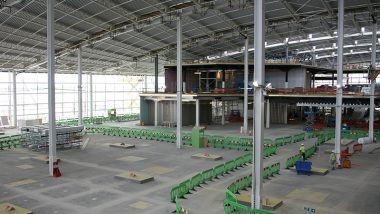
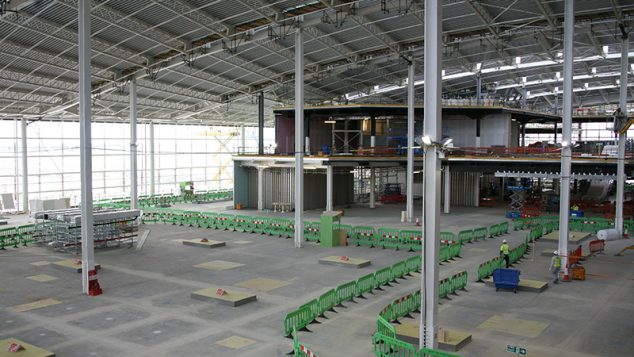
RonaScreed FastDry Prompt – benefits and drying
RonaScreed FastDry Prompt (formerly RonaScreed 8 Day Overlay) is so-called because it is a fast-drying screed additive which enables a 50mm thickness of 3:1 sand/ cement screed to be overlaid with moi ...
Read more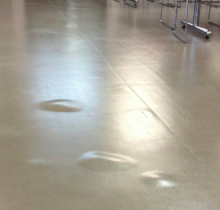
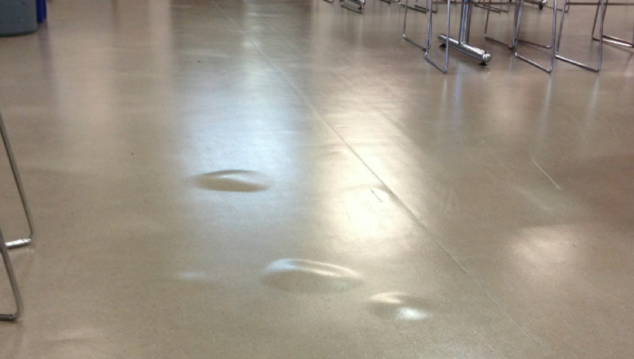
BS 8204-1 “Concrete bases and cementitious levelling screeds to receive floorings — Code of practice” section 6.11.1 suggests the following calculation for drying of screeds with no fast drying additi ...
Read more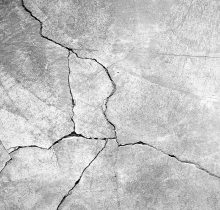
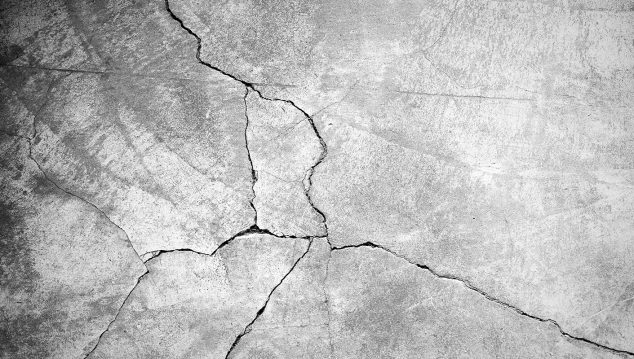
Avoidance/ Mitigation Of The Effects Of Common Forms Of Cracking In Cementitious Screeds
Aggregate is usually 0–4 mm and is mixed with cement in the ratio of 1:3 or 1:4 cement to sand, depending on strength requirements and drying requirements. For total screed thicknesses in excess of 50 ...
Read moreHere to help...